Annotating Samples from Projects 1 and 2

Sample 1
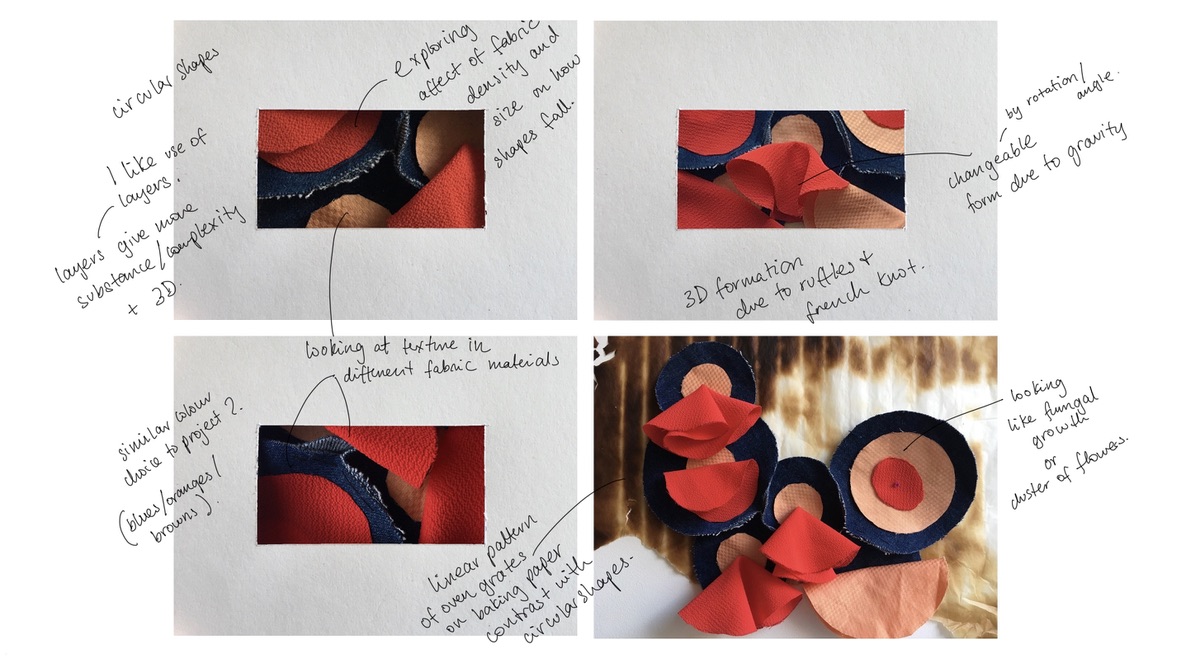
Sample 2
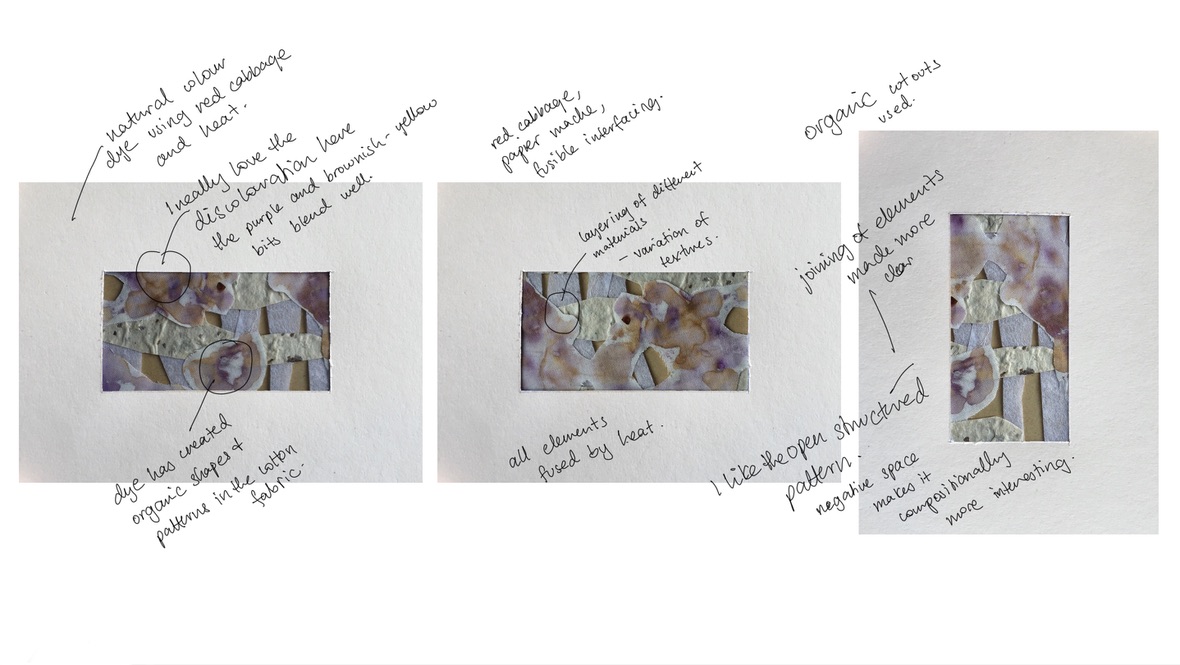
Sample 3
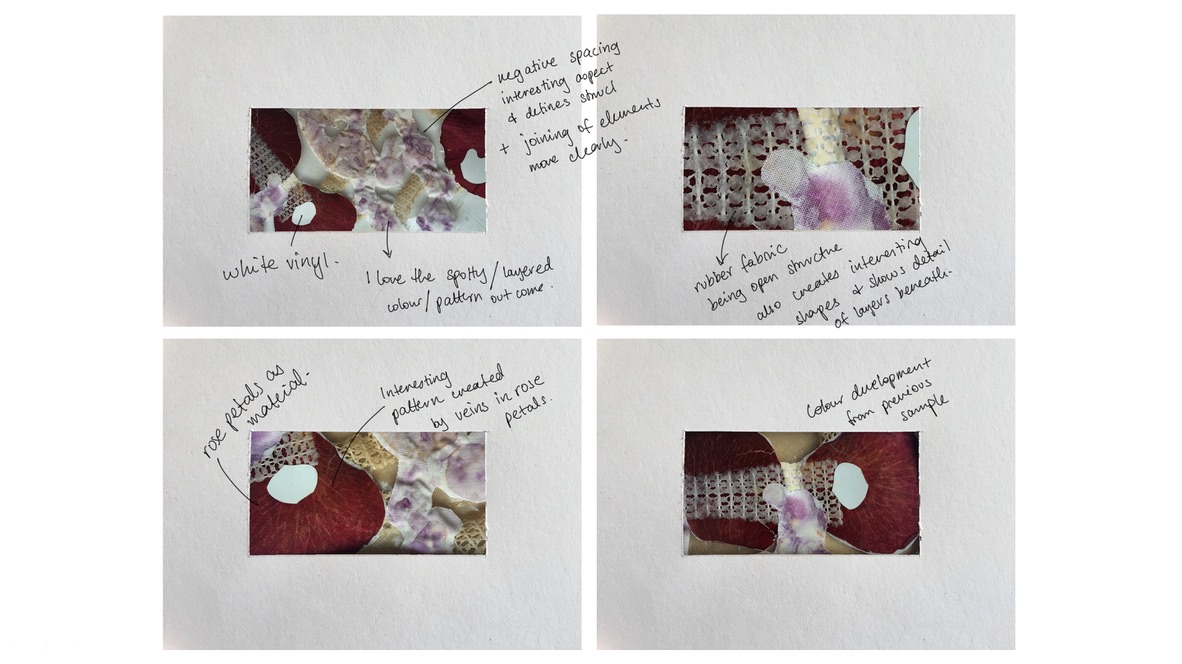
Sample 4
Reflecting and making connections
Using a viewfinder and annotating samples, I found that working with organic shapes and patterns works particularly well for me. I have incorporated many organic materials such as flower petals, leaves and red cabbage for natural dye.
In project 2 especially, I enjoyed using structural elements in my samples, layering materials and creating open structures.
Fusing materials with heat is my preferred technique because the result and pattern is inconsistent, I really enjoyed seeing the outcome rather than knowing exactly how it will turn out. watching materials melt, deform, get distorted. In my pervious project I attempted heat fabric manipulation techniques which is something I could take forward for project 3 if I wanted
My colour palette is consistent showing mainly natural tones with a pop of vibrant orange, and purple. For project 3 I wish to carry on with heat application techniques, create 3-D , collage and using organic materials and forms.
Mood Boards
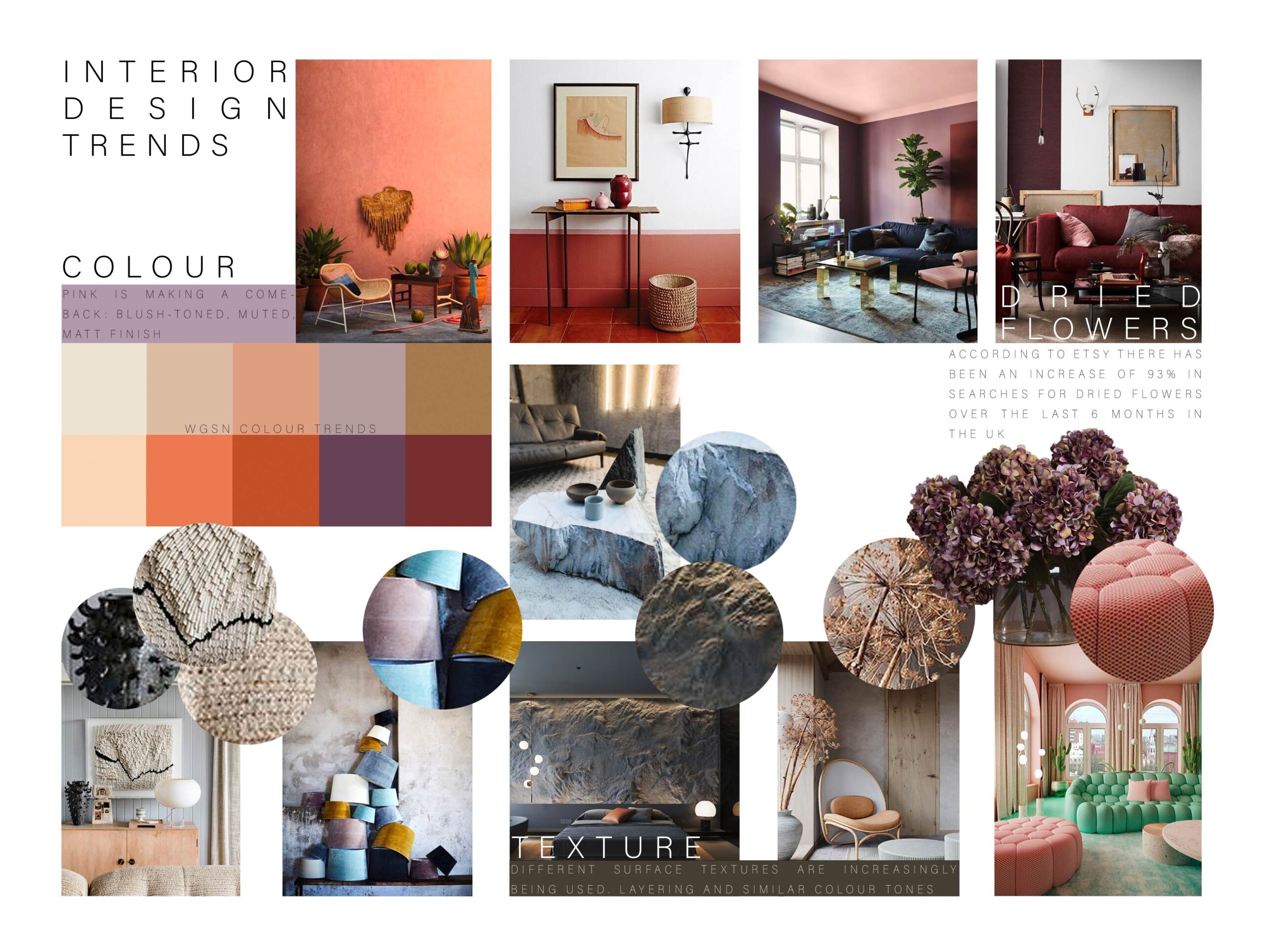
While researching interior design trends, I selected three main features that I felt tied in well with my existing samples, annotated above. Colour, Texture and Layering and Dried flowers.
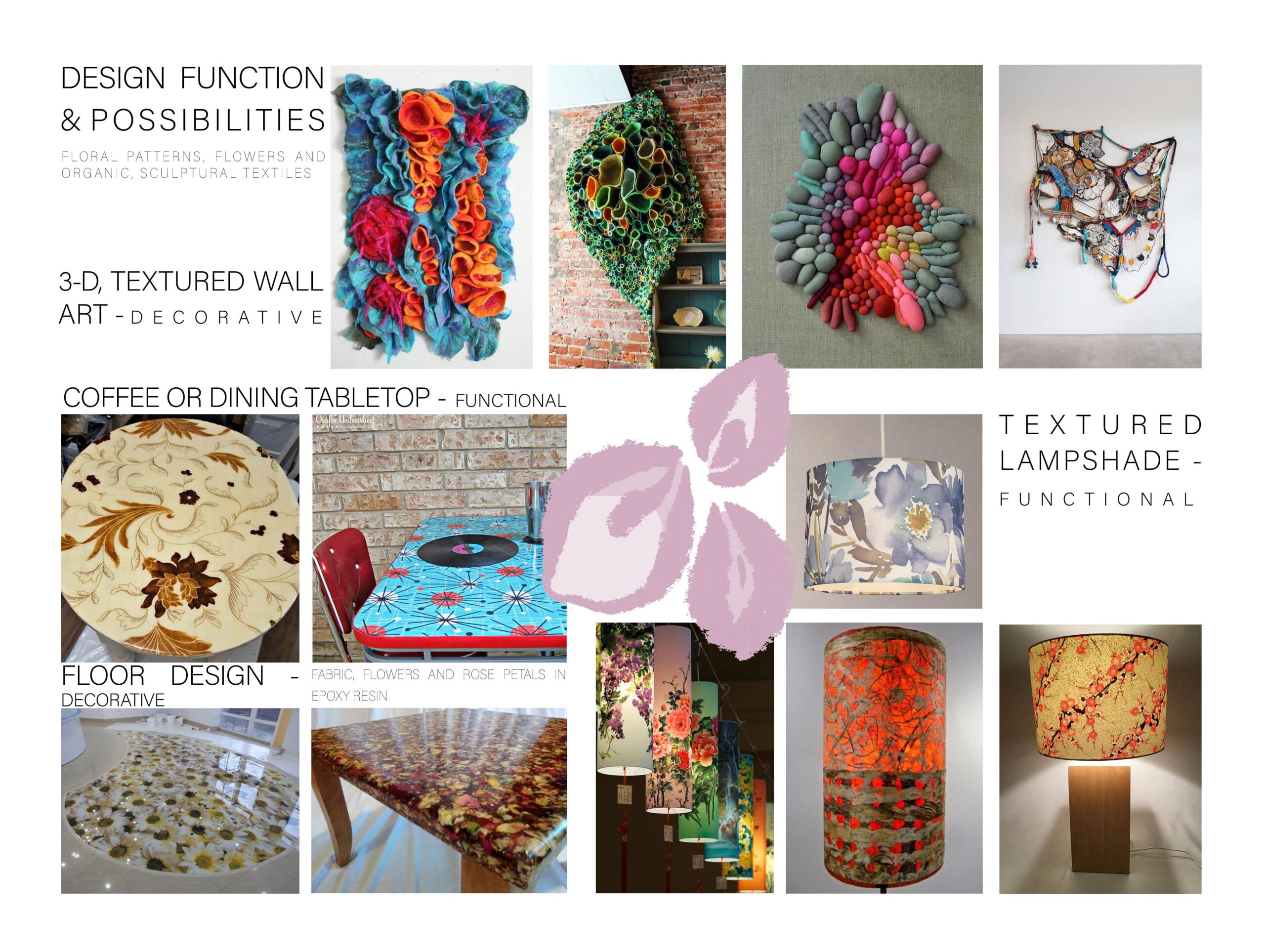
Keeping these features in mind, I looked at various design outcomes. I felt the three listed above had the most potential. I looked at sculptural wall art as I wished to incorporate 3-D elements in my sample. I really loved the idea of instead of decorating a space with a vase of dried flowers, why not incorporate this in your furniture? This led to my research on using epoxy resin to preserve or conceal design samples in furniture. Lastly, referring back to my annotated samples, working with open structures and negative space was something I wanted to take forward. This led to research on lampshades.
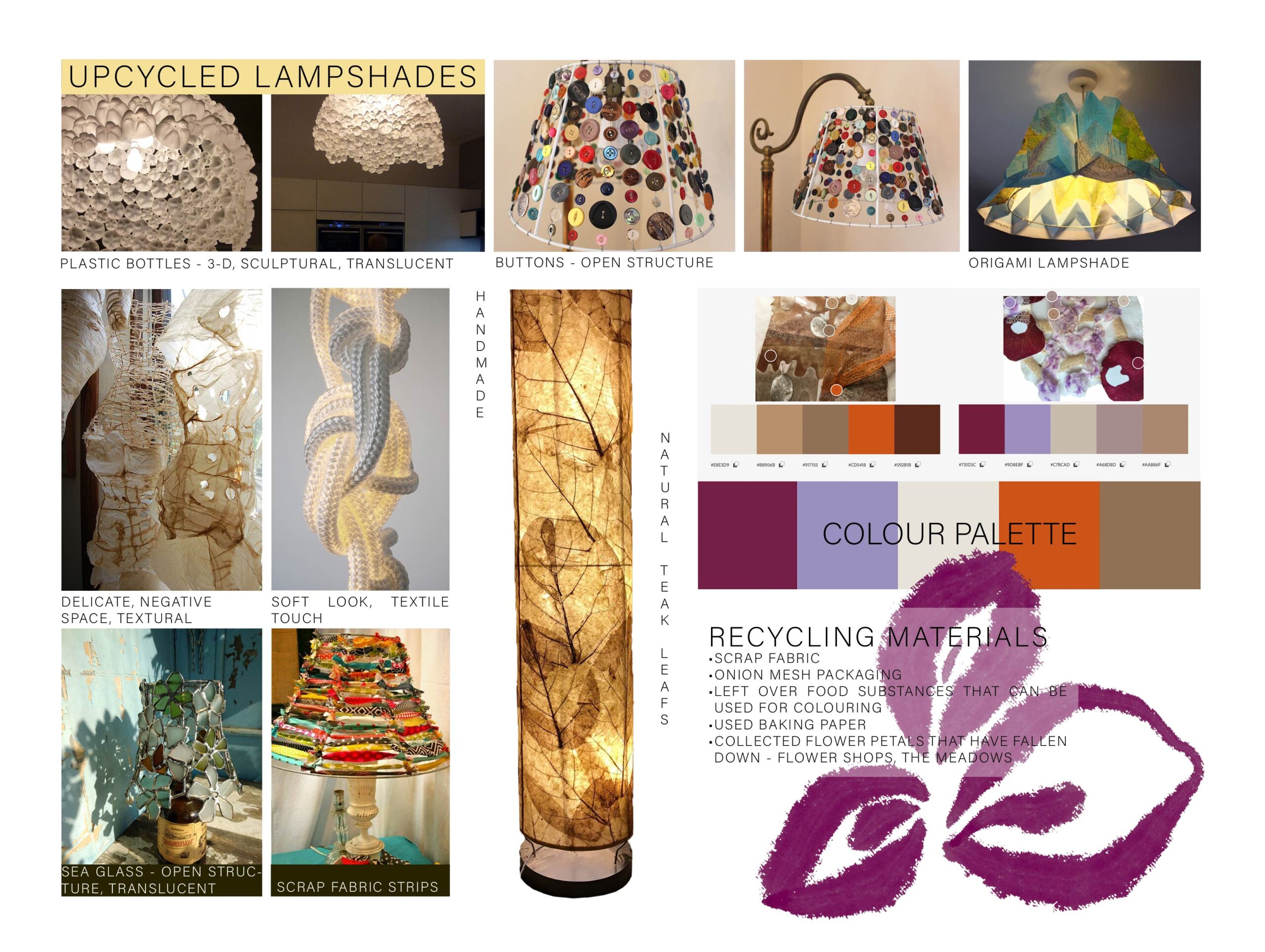
My third board explores different materials, techniques and structures used to create lampshades. I was really inspired by the use of collage, paper manipulation and the use of translucent, recycled materials. My colour palette has been taken from previous samples and is linked to my research on colour trends in interior design.
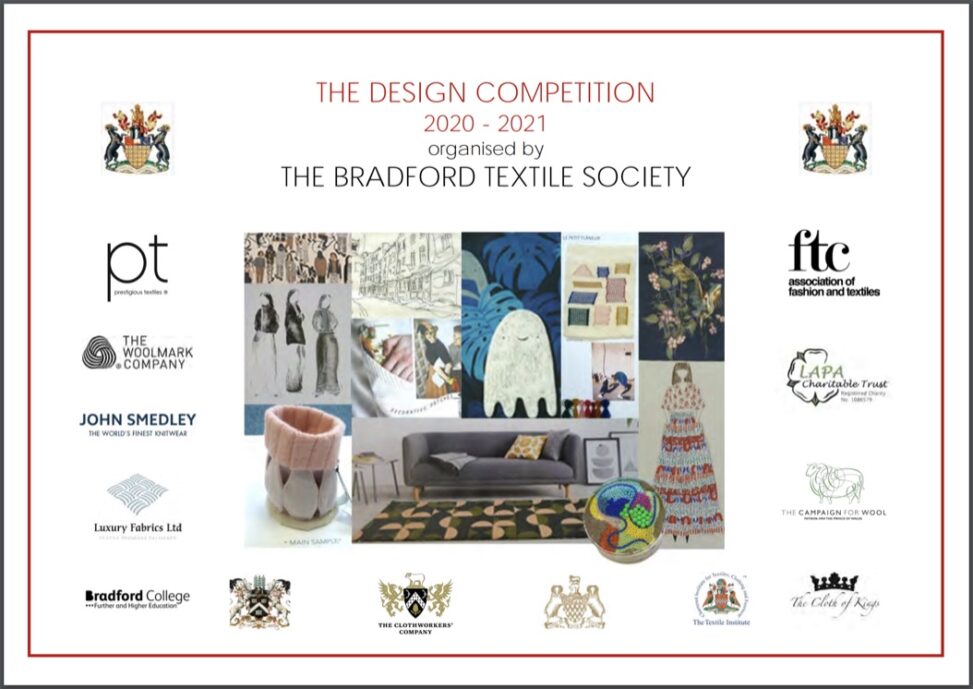


v1mnygre
You have good, clean research boards here, well done! In the pdf you are showing some great insight to your thinking process and the level of detail that you are observing your work is great! I would suggest you pull out some of the slides of your own design development process onto your blog from the pdf, to make them more visible and accessible – these are your work, the work we really want to see! 🙂
lrichar3
Be really careful where you start in the design process. If you are starting with the vision for the end product you riks this impeding your creativity. More critical analysis of your own sampling and how it can develop TOWARDS your context will possibly be less scarey than workiing from the outcome back to connect it to your sampling.